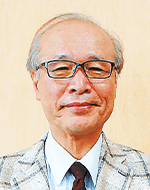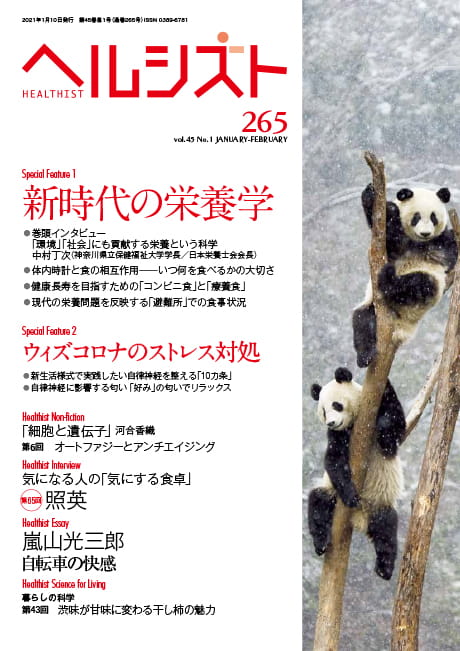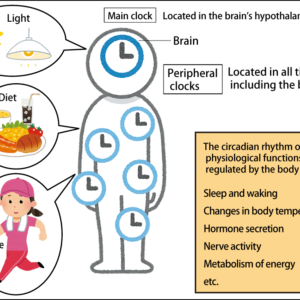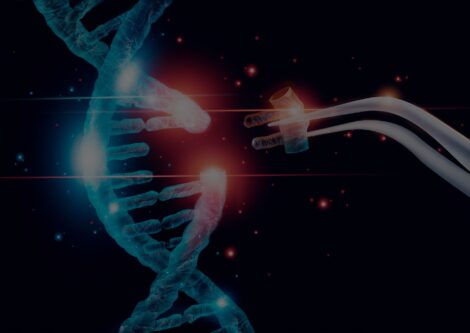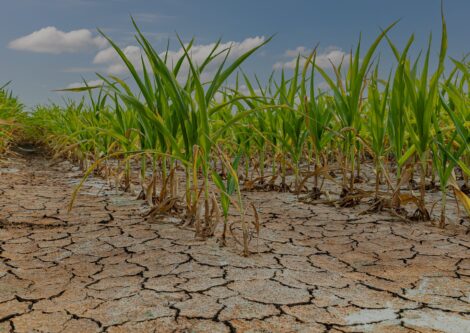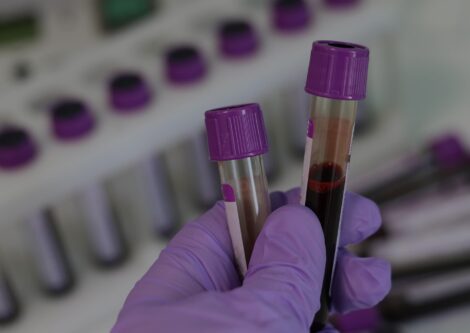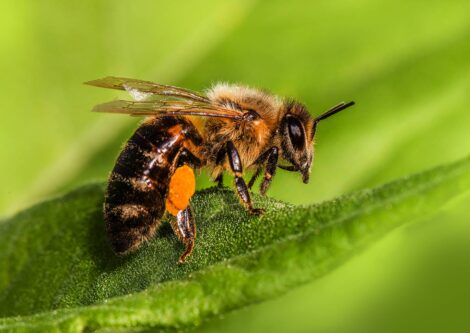The situation surrounding nutritional science is undergoing major changes. These changes are being driven by the imperative to create not only a sustainable society, but also an environment in which everyone can access a healthy, nutritionally balanced diet. In addition, nutritional science must address the increasingly complex nature of individual nutrition situations and the polarization between the segment of the population that takes care to eat a well-balanced diet and the segment that is becoming obese due to a high-calorie diet of low nutritional value. An approach to nutritional science suited to a new age is required.
Special Feature 1 – Nutritional Science for a New Age The science of nutrition will contribute to both the environment and society
composition by Rie Iizuka
illustration by Koji Kominato
Until now, research in the field of nutritional science has primarily focused on how we receive nourishment, for the purposes of maintaining life, promoting health, and preventing disease. However, now that the concept of the Sustainable Development Goals (SDGs) has emerged, people are asking whether nutrition should not be a more multipurpose science.
Nutrition is particularly closely linked to environmental problems. With the population continuing to grow, if we continue to focus on nutrition for becoming healthy in the same way that we have to date, the burden on the environment will eventually become immense, causing huge emissions of greenhouse gases. One projection suggests that, by 2050, it will become impossible for everyone on Earth to access the food and environment required to lead a wholesome and cultured life. Debate is already underway about whether our current nutrient intake and the content of our diets are appropriate. Accordingly, nutritional science needs to explore diets that are both sustainable and capable of keeping individuals healthy.
Diet is not just an individual problem
In 2019, the World Health Organization (WHO) issued a set of guiding principles on a healthy diet that focused on not only the health aspects, but also the environmental and sociocultural aspects, providing guidelines in each of the three areas. This shows that diet is no longer a problem of individual health alone (Figure 1).
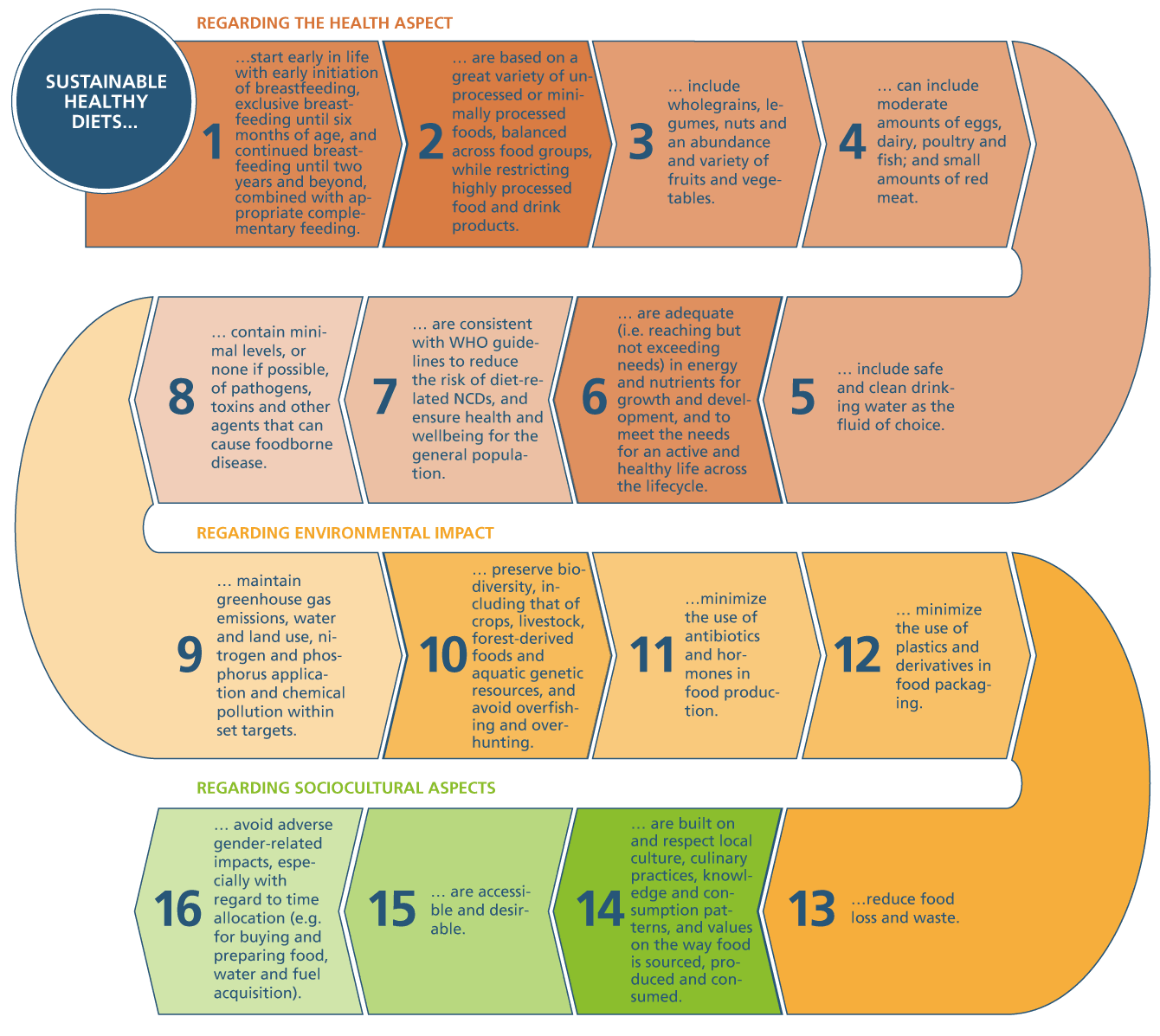
Figure 1. WHO guiding principles for sustainable healthy diets (2019)(https://www.who.int/publications/i/item/9789241516648/)
A growing number of reports also suggest that we should rethink our meat-based diet.
In 2018, British medical journal The Lancet established the EAT-Lancet Commission, which in 2019 formulated guidelines for the ideal daily diet to tackle both environmental and health challenges. With greenhouse gases emitted by livestock regarded as a problem, a meat-based diet imposes a major burden on the environment, so the guidelines recommend that the daily intake of red meat (pork, beef or lamb) be restricted to 14 g. While these recommendations were met with some controversy, they at least triggered a discussion about whether we need to consume so much meat to achieve the necessary protein intake or whether we can safeguard human health and happiness by replacing meat with soy and other plant-based proteins.
In the UK, a large-scale cohort study of vegetarians has been conducted at the University of Oxford as part of the European Prospective Investigation into Cancer and Nutrition (EPIC), which has produced an article on the subject of whether meat is a necessary part of the human diet. The study examined the risk of death from cancer, stroke, and ischemic heart disease in three groups of participants: meat eaters, fish eaters who do not eat meat, and vegetarians. The results showed that the risk of myocardial infarction was 1.4 times higher in meat eaters than in the other two groups, but, on the other hand, vegetarians had a 20% higher risk of stroke than meat eaters. Certainly, stroke was a major cause of death in prewar Japan, when consumption of animal protein was low.
Today, we have settled on advocating a diet centered on fish, with only a little meat, and also including fruit and vegetables, milk and other dairy products, and soy.
Nutritional science is the science of unraveling the relationships between living creatures
The EAT-Lancet Commission report sought to reduce meat-eating for the sake of the environment, society and culture, while EPIC’s report suggests that a diet consisting entirely of plant-based foods is not necessarily good for our health. Either way, this is the age of questioning what we should eat and how.
In this era, I believe that we need to rethink the concept of nutritional science. The Figure 2 shows the ideal approach to nutritional science.

Figure 2. The structure of nutritional scienceNutrition is involved at all levels relating to food and living creatures. It is necessary to think about it comprehensively, not just in terms of individual relationships, such as between cells and specific types of nutrients.(Figure courtesy of Teiji Nakamura)
Food contains nutrients and energy. As well as eating food, we can take nutritional supplements to gain these. We refer to eating meals combining these foods and the results of cooking them as “diet.” Meals and cooking involve the processes of producing, processing, distributing, storing, and consuming foods. The environment and culture affect these processes.
Meanwhile, nutrients in the bodies of living creatures are processed at the cellular level, affecting the organs of which humans consist and thereby influencing health preservation, welfare, medical care, education, and the economy. We humans live in communities, which make up states, which in turn make up Earth.
Research into nutritional science covers diverse topics and is making progress in partially shedding light on the relationships between fields, such as the relationship between cells and specific nutrients, and between the food environment and communities. However, an overarching perspective will be required in the future to reveal the full picture in regard to nutrition. We know empirically that food is related to human life. Nutrients are contained in food and are also components of the human body. The component that food and people have in common is nutrients, and nutritional science could be described as the academic discipline that scientifically demonstrates the relationship between food and living creatures.
As more than half of the 17 SDGs relate to nutrition, it is expected that nutrition will play an important role in solving problems so that the SDGs can be achieved. Amid this situation, the Tokyo Nutrition for Growth Summit will be held in Japan in December 2021.
Japan’s nutrition almost certainly has a substantial role to play in resolving the issue of how to achieve a healthy diet without burdening the environment. Japan has a food culture that does not seek to subdue nature, but rather respects it and savors the seasonal changes throughout the year. After the war, modern nutritional science was introduced to Japan’s time-honored food culture and a campaign to improve nutrition amid limited food resources was promoted. This resulted in the creation of a balanced diet, leading to Japan achieving the world’s highest life expectancy.
A new type of obesity and malnutrition
In terms of Japan’s message to the world, I want to focus on the problem of the double burden of malnutrition. This refers to a situation in which people struggling with overnutrition exist in the same place at the same time as those suffering from undernutrition, or in which an individual swings between the two states over the course of their life. In an age in which there is a clear distribution, as has been the case hitherto—with overnutrition due to indulgence in meals occurring in developed countries in the Northern Hemisphere and undernutrition due to a lack of food occurring in such parts of the Southern Hemisphere as Africa and South America—this double burden does not occur. This is because it is fair to say that undernutrition in poorer regions was a nutrition problem resulting from economic problems that would naturally be eliminated once a state became wealthier.
However, at present, in developed countries in which the problem of income inequality has appeared, obesity has become uncommon among the wealthy, because they are highly health conscious, choosing a healthy diet and going to the gym to exercise. In contrast, a new type of obesity and malnutrition has emerged among the poor, due to their consumption of a diet that has few nutrients, but is high in cheap, empty calories from oils and sugars. Economic development has given rise to income inequality in developing countries as well, creating a similar situation to that seen in developed countries. In other words, it is now becoming hard to make even simple distinctions between the Northern and Southern Hemispheres, let alone between rich countries and poor. At the same time, overnutrition and undernutrition can exist even within individuals, with a person being obese in middle and old age, yet being undernourished as they age, and consuming excessive energy, yet lacking protein and vitamins.
The same kind of situation can be noticed in Japan as well. As can be seen from the recent highlighting of income inequality and nutrition problems by the National Health and Nutrition Survey, nutrition inequality is starting to emerge in Japan, albeit not at such high levels as in the West. At the individual level, obesity from empty calories makes a person more prone to lifestyle diseases such as a myocardial infarction, while at the national level, it leads to the problem of increasing medical expenditure. There are a number of conditions making it difficult for those living in poverty to access a healthy diet. Two things are required to solve this problem: creating a food environment in which everyone can eat cheap, highly nutritious meals wherever they go, and creating a mechanism that enables those living in poverty to receive nutrition education.
Going forward, nutritional science should incorporate the economic dimension of food prices. In Japan, the problem of the nutritional value of food and its price has been disregarded. Overseas, however, there are a number of experts in the economic analysis of nutrition, and research into the correlation between nutrients and price—that is to say, what foods represent the most efficient way of consuming 1 g of protein—is thriving, with guidance being provided based on this research.
In Western countries, research into methods of evaluating foods themselves is getting underway. Research is likely to be required that comprehensively evaluates nutritional value, for example, the differences between eggs, meat, and fish when consuming the same amount of protein. In other words, as meat contains not only protein, but also nutrients such as vitamins and minerals, we need to look at both what proportion of the required amount of protein that food can supply, and the amount of vitamins and minerals it is capable of providing. At the same time, meat also contains saturated fatty acids, which raise the risk of arteriosclerosis, so if we calculate the percentage contribution of these and deduct that figure from the nutritional value, we get an overall evaluation in the form of a points score. This enables us to provide a comprehensive nutritional value score for specific types of meat. If we apply this to all foods, we will clarify their nutritional value. And if we then incorporate the economic perspective, we will be able to see what needs to be done to enable people to access cheap meals with a high nutritional value.
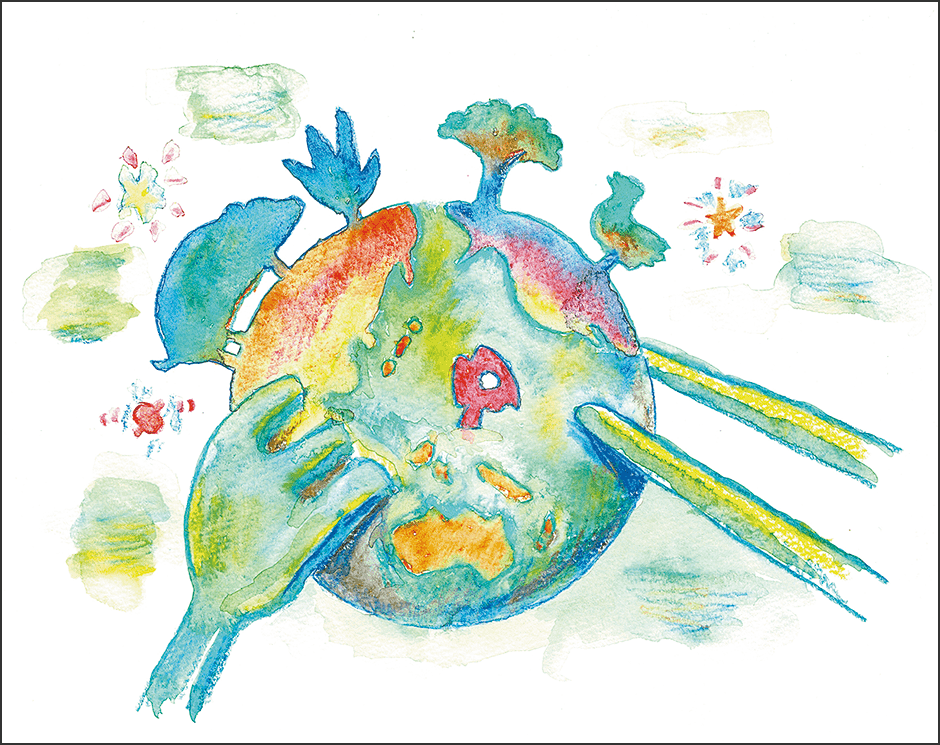
Japan’s nutrition is well-regarded worldwide
I believe that Japan might actually be succeeding in eliminating nutrition inequality of this kind at present.
This is because nutritional science makes a substantial contribution to the Japanese people having the world’s highest life expectancy.
When it began before the war, nutritional science in Japan was a battle with extreme undernutrition. After the war, the nutrition situation gradually improved with the aid of powdered milk and wheat supplied by the U.S., and for a period of some 20–30 years thereafter, the country’s nutritional status remained balanced, with neither overnutrition nor undernutrition. However, as diets became westernized, obesity increased and the problem of lifestyle diseases surfaced. Accordingly, Japan launched Health Japan 21 and began offering health promotion advice such as health checkups for metabolic syndrome. The work undertaken on measures to combat lifestyle diseases is starting to stem the tide of obesity. The number of prediabetic people is beginning to fall and, looking at mean values, we are starting to reach a good situation in which both overnutrition and undernutrition figures are low. Furthermore, national registered dietitians have been deployed in schools, hospitals, communities, and companies to provide nutritionally balanced meals, while also offering nutrition education. Such thorough nutrition education and communal catering have succeeded in shifting the mean values and improving the nutritional status of the population.
While our diet has become westernized, Japanese people’s nutritional status is still good when judged on a global level. Although the consumption of takeout and restaurant meals is increasing, Japanese people are consciously choosing balanced menus, such as those intended to increase their vegetable intake a little. Moreover, the number of places offering such meals is high, making them easy to access. Japan also has a school lunch system in which dietitians provide well-balanced meals, ensuring that menus of this kind become prevalent among children as well. Japan’s nutrition is well-regarded worldwide and I have had opportunities to speak about it overseas. An American researcher was astonished to discover that Japanese public elementary and junior high schools do not have soft drink vending machines and asked me why this was. I replied that it was not because anyone had said they could not be placed in schools, just that it was a deeply rooted part of our culture. In fact, I said, to introduce them would be so extraordinary as to make the news.
So why does malnutrition as exemplified by the double burden of malnutrition occur, even though people around the world acknowledge the importance of nutrition? I think that those involved in the field of nutrition have overlooked something and that the key to improving the situation lies hidden somewhere among the numerous initiatives attempted on the front lines of nutrition in Japan. I believe that unraveling this and spreading the word about our findings across the globe will enable the science of nutrition to contribute to humanity.


